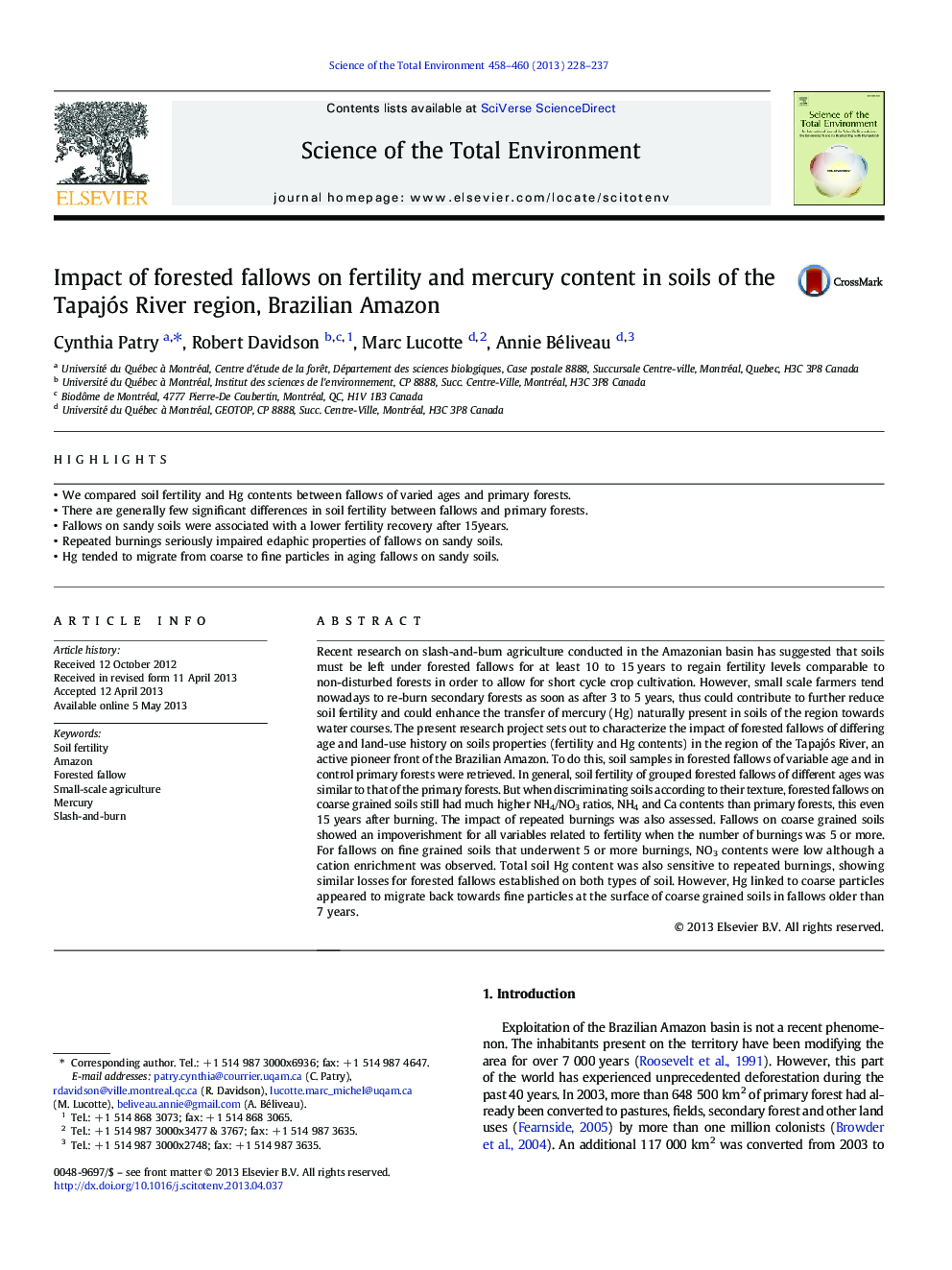| Article ID | Journal | Published Year | Pages | File Type |
|---|---|---|---|---|
| 4428624 | Science of The Total Environment | 2013 | 10 Pages |
•We compared soil fertility and Hg contents between fallows of varied ages and primary forests.•There are generally few significant differences in soil fertility between fallows and primary forests.•Fallows on sandy soils were associated with a lower fertility recovery after 15 years.•Repeated burnings seriously impaired edaphic properties of fallows on sandy soils.•Hg tended to migrate from coarse to fine particles in aging fallows on sandy soils.
Recent research on slash-and-burn agriculture conducted in the Amazonian basin has suggested that soils must be left under forested fallows for at least 10 to 15 years to regain fertility levels comparable to non-disturbed forests in order to allow for short cycle crop cultivation. However, small scale farmers tend nowadays to re-burn secondary forests as soon as after 3 to 5 years, thus could contribute to further reduce soil fertility and could enhance the transfer of mercury (Hg) naturally present in soils of the region towards water courses. The present research project sets out to characterize the impact of forested fallows of differing age and land-use history on soils properties (fertility and Hg contents) in the region of the Tapajós River, an active pioneer front of the Brazilian Amazon. To do this, soil samples in forested fallows of variable age and in control primary forests were retrieved. In general, soil fertility of grouped forested fallows of different ages was similar to that of the primary forests. But when discriminating soils according to their texture, forested fallows on coarse grained soils still had much higher NH4/NO3 ratios, NH4 and Ca contents than primary forests, this even 15 years after burning. The impact of repeated burnings was also assessed. Fallows on coarse grained soils showed an impoverishment for all variables related to fertility when the number of burnings was 5 or more. For fallows on fine grained soils that underwent 5 or more burnings, NO3 contents were low although a cation enrichment was observed. Total soil Hg content was also sensitive to repeated burnings, showing similar losses for forested fallows established on both types of soil. However, Hg linked to coarse particles appeared to migrate back towards fine particles at the surface of coarse grained soils in fallows older than 7 years.
